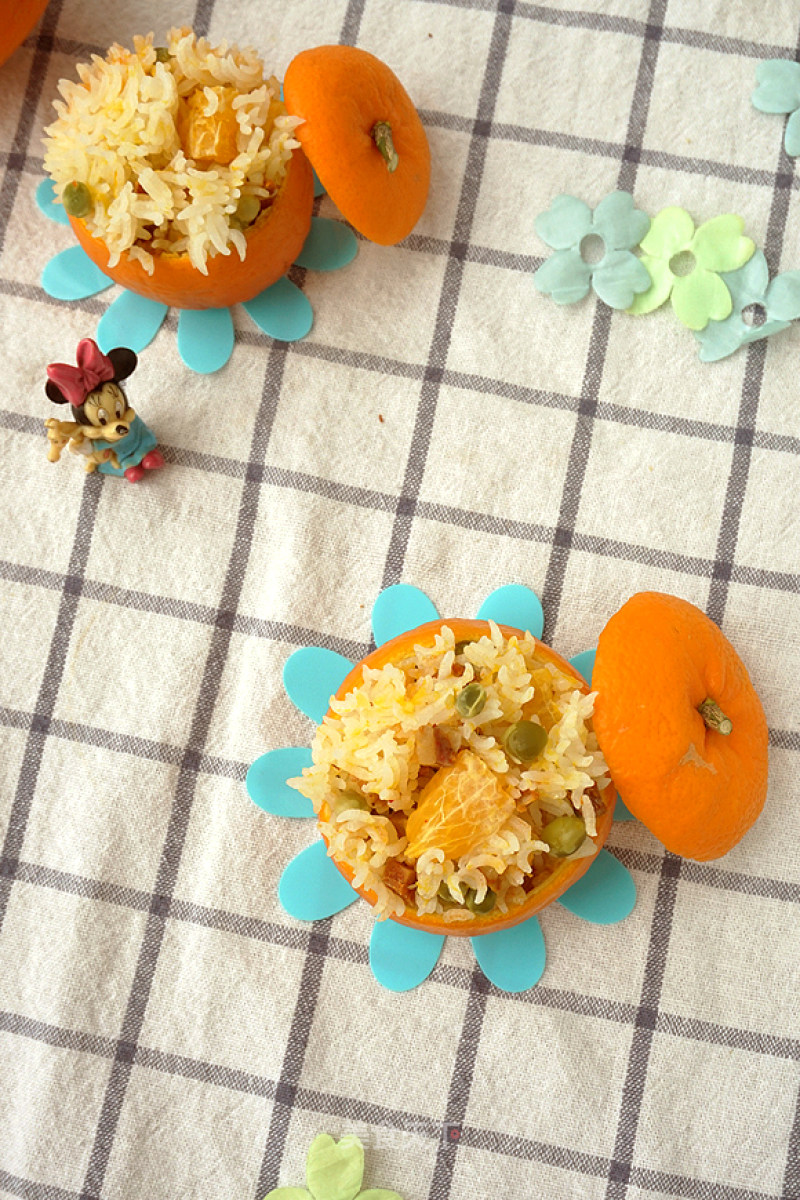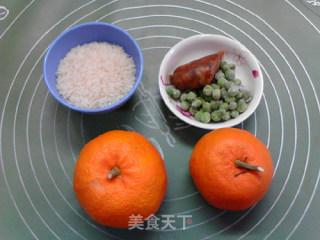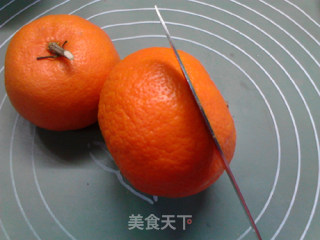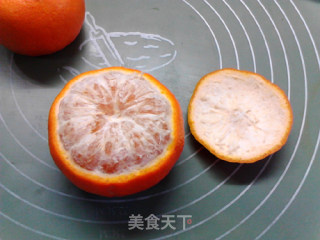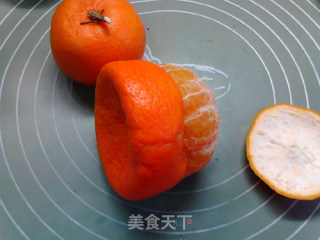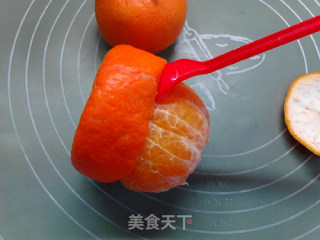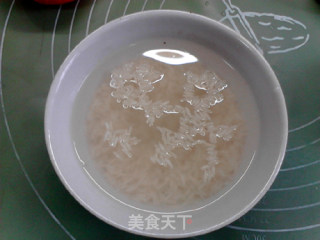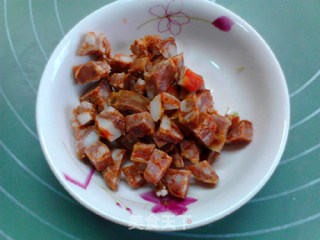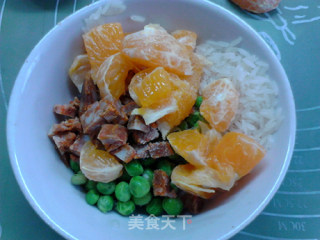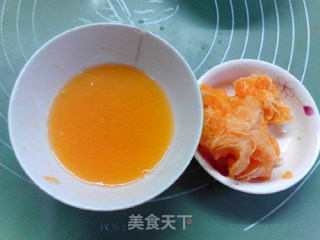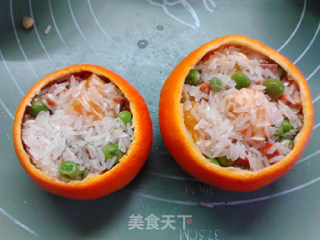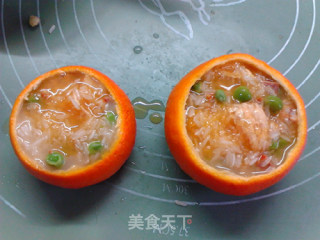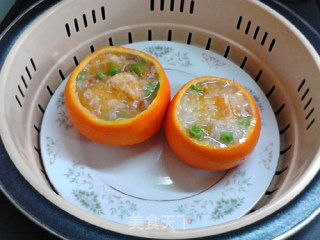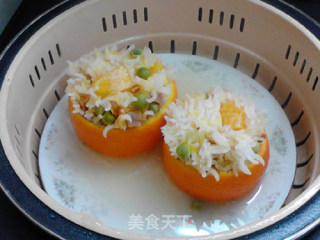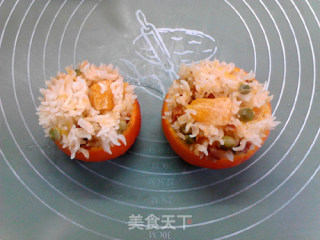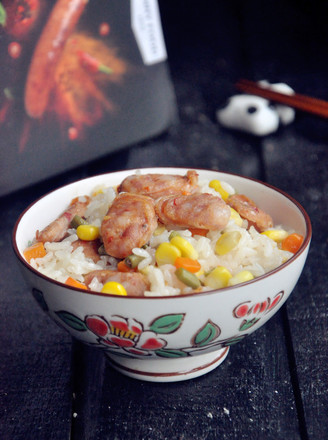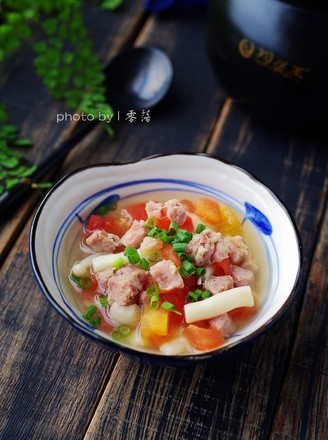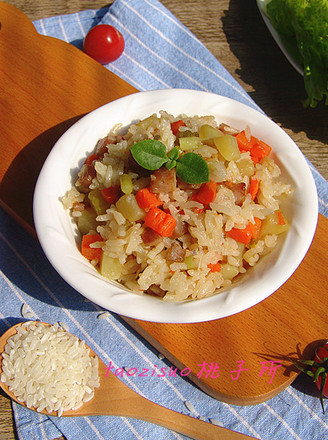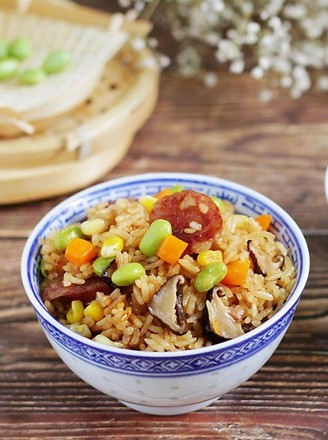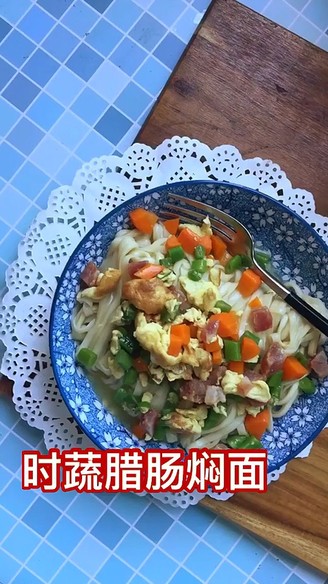Steamed Rice with Orange Sausage
by Food·Color
Favorite
Difficulty
Easy
Time
1h
Serving
2
Using orange shells as bowls is not just for desserts. Rice bowl rice bowl, the first use of bowl is of course to serve rice. How about the last two citrus fruits, which are turned into orange bowls to steam a bowl of rice?
If you want simple orange rice, you can steam the white rice directly. But I have always liked to mix and match colorful rice with meat and vegetables. A small chopped sausage and a little peas seem to be enough, but if you add something else, this bowl should not fit.
Two fertile oranges only used 5 petals of pulp, also because of the capacity. At the beginning, I didn't even think of using orange juice. It's just that when I saw the remaining flesh, I suddenly had an idea. Why use water instead of orange juice? After the rice grains soaked in orange juice are steamed, wouldn't it be more orange fragrant?
The orange bowl has a limited capacity, but it is still forced to stuff all the dry ingredients into it. Then inject orange juice so that the orange juice has covered all the ingredients, just like simmering rice in normal days. When cooking white rice in a rice cooker, put it in a steamer and steam it together. When the rice below is cooked, the orange bowl of orange rice steamed on top is also ripe. When the cover was uncovered, I couldn't help but stared straight. The bowl was too small, and the rice grains swelled up after absorbing water, looking like exploding heads. . . .
Orange fragrance is full, fresh and refreshing. . . . "
If you want simple orange rice, you can steam the white rice directly. But I have always liked to mix and match colorful rice with meat and vegetables. A small chopped sausage and a little peas seem to be enough, but if you add something else, this bowl should not fit.
Two fertile oranges only used 5 petals of pulp, also because of the capacity. At the beginning, I didn't even think of using orange juice. It's just that when I saw the remaining flesh, I suddenly had an idea. Why use water instead of orange juice? After the rice grains soaked in orange juice are steamed, wouldn't it be more orange fragrant?
The orange bowl has a limited capacity, but it is still forced to stuff all the dry ingredients into it. Then inject orange juice so that the orange juice has covered all the ingredients, just like simmering rice in normal days. When cooking white rice in a rice cooker, put it in a steamer and steam it together. When the rice below is cooked, the orange bowl of orange rice steamed on top is also ripe. When the cover was uncovered, I couldn't help but stared straight. The bowl was too small, and the rice grains swelled up after absorbing water, looking like exploding heads. . . .
Orange fragrance is full, fresh and refreshing. . . . "

